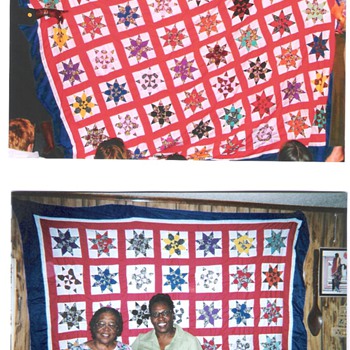Things that EXCITE ME.... | sabyrd8
» collections
Things that EXCITE ME....
The women below represent 100+ years or six generations of quilt makers. They are descendants of the slave Edward "Ned" Titus and his wife Chlorie Dunbar-Titus, who were transported to Texas in 1852, by the Simeon and Nancy Lake family from South Carolina. Neds' wife and daughters did all the household work(which included,cooking,washing,sewing,and quilt making...)It is a recorded fact ,by many sources, that most slave women brought to Texas were taught to sew and create quilts.These were considered by their owners to be prized, desirable and necessary skills...seeing that Texas winters were quite cold and lots of covers would be needed for big families. After Emancipation, Ned and his sons bought land situated on Brown's Creek, located in Freestone County,Texas. This land came to be known as Titus Farms. The community was replaced in the 1970s by the Big Brown Mining Company, who originally planned to dig up the bodies in the old "Hopewell Cemetery", put them in barrels, and relocate them. This idea was fiercely opposed by one of Ned's great grand daughters... who felt that the idea was 'UNACCEPTABLE'.She won her case. Hopewell Cemetery is now the only remaining recognizable landmark of Titus Farms that remains in existence. It sits right next door to the Big Brown Electrical Plant.Here is where Ned, Chlorie, their sons, WWI & WWII Black soldiers, as well as, many other ex-slaves and their family members have found their final resting place. The community may have come to an end with the advent of coal mining, but the quilt making legacy has lingered on.The women featured below are all descendants of the Edward "Ned" Titus family and its quilt making legacy. To attest to the importance of this quilt making legacy...Laverne Brackens, who is his Great,great grand daughter was presented with, one of 9, LIFE TIME HONORS as a 2011 NEA NATIONAL HERITAGE FELLOWSHIP FOLKART AWARD for continuing on with the family's quilt making legacy.







